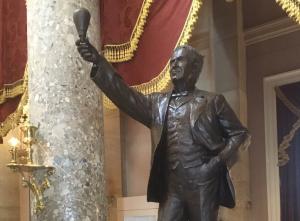Our Electrification Mission Remains, Even Here
Steve Mitnick is Editor-in-Chief of Public Utilities Fortnightly and author of the book “Lines Down: How We Pay, Use, Value Grid Electricity Amid the Storm.”
Once our industry's greatest glory was electrifying a community. Our achievements — think Hoover Dam, or lines spanning mountains — were celebrated in culture and lore. The rise of suburbia and the south, and our soaring cities, doesn't happen without the buildout of reliable economical grids.

But all that is a distant memory. Grandma tells of the day her town was connected. Though, try as they may, it's hard for the grandchildren to share her pain of the days before and her joy of the days after. They've always lived in a dense mesh of connections.
Is the age of exploration — of inspiring achievements — over? Are there no more lands to conquer? Making the grid extremely low-carbon. One could get inspired by that goal, and many are. Making the grid take over high-carbon tasks like transportation. Another deserving goal.
Otherwise, the public is complacent about electricity. They expect it. They're shocked — figuratively — when a squall or squirrel stops the flow. And they're unimpressed by the complexity we address daily to keep their connection continuous.
That's not the case for the billions without reliable power, or any power, around the globe. Each month, Public Utilities Fortnightly features a four-page ENact photo-story on energy poverty in Africa, Asia, eastern Europe and South America. It's heart-breaking to see so vividly the stunted lives of unconnected communities.
But energy poverty is closer to home. This month's PUF also features an extraordinary interview with the general manager of the Navajo Tribal Utility Authority. Well over a quarter of all the homes in the service territory — fifteen thousand homes — are not electrified.
Let me repeat.
Well over a quarter of all the homes in the service territory are not electrified.
This is unconscionable. We should be ashamed that economic poverty among the Navajo, combined with low population density and adverse terrain, have conspired to hold back so many families from the grid's bounty.
Listen to Navajo's general manager. Families live without power and so without water, gas for cooking and heating, and communications. Parents work in distant cities and lose touch with their children, who must study without adequate light at night.
Whether in Liberia or Arizona, no grid connection means darkness in several senses of the word. And getting connected by the utility brings immeasurable joy and the promise of a better life for parents and their children.
It turns out there's more energy poverty in America. Next month's PUF will feature another article on the terrible situation in Puerto Rico. The downward spiral in the economics of the beautiful island has led to the financial failure of its electric utility. Much of the public suffers frequent service interruptions, some so bad that machines and appliances have been rendered inoperable.
One of the most honorable things our industry does is commit to fight energy poverty overseas. I'm familiar with the programs sponsored by NRECA, NARUC, USEA and the Energy Bar Association. I'm sure there are others.
Why do they do this? Why travel thousands of miles to electrify a rural village? Certainly, there's the sheer morality of it. And the immense satisfaction of so significantly helping people.
But there's also the gratification that, when we connect that rural village so far away, we've returned to our original mission. To deliver the grid's bounty to all.
Doing so reminds us, and perhaps our complacent constituencies, of what we're about. We light the world. It's one of the noblest jobs a man or woman can have.
So, when you read in PUF about the work abroad of ENact, the work here of utilities in the Navajo lands and in Puerto Rico, and the programs to fight energy poverty by our industry associations, you might consider how you can help. I know, after reading these stories, I did.
Lead image: Thomas Edison, in National Statutory Hall, stands in the United States Capitol. Edison proudly holds aloft his light. He first electrified the home of the wealthy financier J.P. Morgan. But he, like our other forefathers in utilities and regulation, were intent on lighting the world — every home and every public place.



